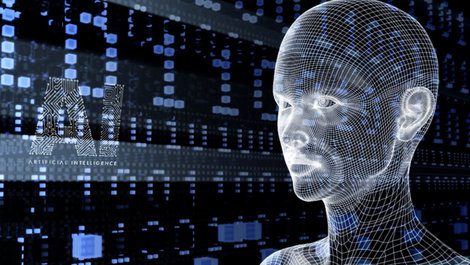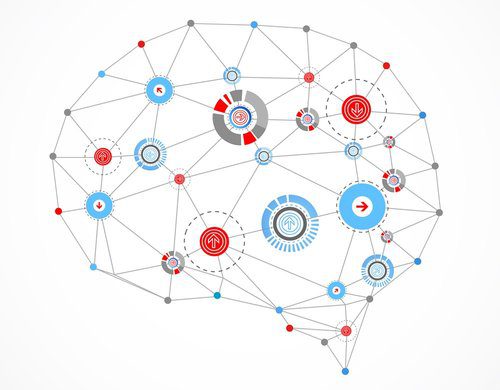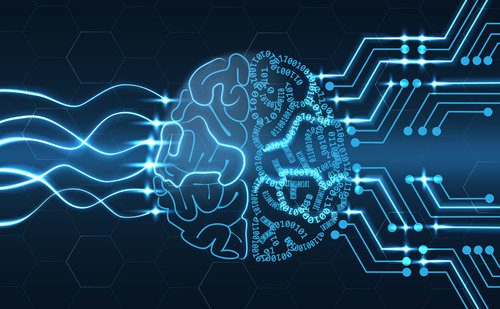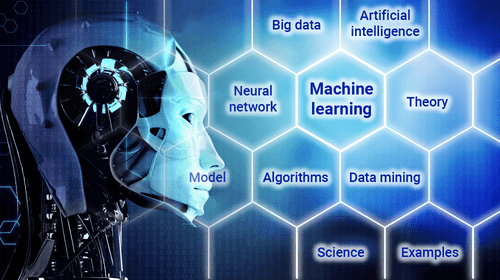Data is rampant in the Internet of Things (IoT) Age, during which the exponential growth of data has outpaced the capacity of traditional computing. It has reached maturity in some stages, but it is in adolescence in new stages. With the advent of Big Data, businesses are merging it with big compute and IoT for analytics using Artificial Intelligence (AI). After the raw input from the big data gets cleaned, structured, and unified, AI performs cognitive functions and outputs values for the business. With its ability to analyze massive amounts of data in milliseconds, it can now be processed in “real-time”. In data science, the “hypothesis-first” approach has been moved to “data-first” approach. In the near future, big AI will be ruling many different industries and also in software. It is already an emerging asset in health care, finance, management, education, transportation, and manufacturing, and it is revolutionizing the operations. Since computers can solve problems, they compare any information and decide what it signifies. The human brain consists of nerve cells or neurons, which constantly transmit and process information received from the senses in milliseconds. Likewise, deep learning architectures use multiple layers of artificial neural networks on input data to abstract and composite representation. Although mimicking the human thought process is far away, robotics is a growing field of research and design with the goal to recreate human intellect. Following that, the superintelligent machines – as new species – can hold tremendous advantages in mental capability, a vastly superior knowledge base, and the skills to multitask. This paper reviews the current status of the methods – such as artificial intelligence, machine learning, and deep learning – and their automation’s result in superintelligence.
I. BIG DATA
The growth of data is enormous at every moment, and its size is increasing exponentially. Big data is taking the world due to its growth and large volume. As it continuously grows, it becomes more meaningful and pertinent for big data analytics. As the large and varied data sets are processed and analyzed, information and the patterns are uncovered. That helps the companies make informed business predictions and decisions.
The large sets of data were almost impossible to process using the tools in early 21th century, until Apache Hadoop was built by Yahoo! on top of Google’s MapReduce [1]. The open-source Hadoop facilitates multiple computers to network and crunch through the large data using MapReduce, which is a programming model for big data, to solve problems. The data processing methods of reading, performing, and writing the operations back and forth from the cluster are extremely valuable. Besides processing the large data much faster, it also effectively provides fault tolerance, which enables the system to operate properly in the event of failure. Spark operates similarly on huge datasets, but also provides a distributed file system that allows real-time and in-memory processing. The expanded application of big data analytics has resulted in a massive increase in startups that understand and adopt big data [1].
II. ARTIFICIAL INTELLIGENCE
As human capabilities are being replaced or enhanced by machines, the artificial intelligence is what constructs the automation for breakthrough results. Artificial Intelligence, referred to as machine intelligence, is intelligence presented by machines in contrast to natural human intelligence. Understanding decision-making by AI, as researched by Future of Life Institute (FLI) [2], has been funded to manage the growth of technology. As the initiatives of big data mature, companies and organizations combine big data processing and AI to accelerate their business values. Their convergence has developed a significant impact to drive the company’s business value. Down to its core, AI describes the dynamic process of a machine to resolve and conclude based on logic. It performs these processes on big data to determine its meaning and relevance for the company.
III. MACHINE LEARNING
Machine learning is a subset of AI that without minimal human intervention. It consists of algorithms that take in the data, perform calculations, and deliver the correct answer in the most efficient manner. In the realm of big data, machine learning and AI are used interchangeably [3]. Since it is now possible to process the data streams in real-time, it moves machine learning into the same direction to control real-time data. Instead of depending on the representative data samples, the data itself can mine and find relevant information. Machine learning and AI has moved from research labs to production phase.
IV. DEEP LEARNING
The clusters of Hadoop and Spark, as mentioned earlier, can also be leveraged for deep learning. Powerful tools of deep learning are BigDL library, which provides deep learning applications, and Math Kernel Library (MKL), which contains mathematical functions on the basis of machine learning algorithms for optimized performance [4]. Deep learning is the engine that uses these frameworks, among others, to propel the science behind machine learning and AI. Another series of algorithms are neural networks, and they process data like the brain to make sense of the information. The concept of deep learning is simply multiple layers of neural networks nested together, sometimes referred as “deep neural network” [3].
V. SUMMARY
In conclusion, this article introduces big data and its statistical power, higher complexity, and analytics. Although big data analytics offers great statistical power, its higher complexity can lead to false discovery. It explains the emerging AI. The greater volumes and sources of data are enabling capabilities in AI, as well as evolving machine learning. It also explains how machine learning and deep learning construct the ground. Data science is being learned exponentially as more portions are encountered, along with the glimpse of the incoming superintelligence.
REFERENCES:
[1] https://datafloq.com/read/big-data-history/239
[2] https://futureoflife.org/team/?cn-reloaded=1
[3] https://www.datasciencecentral.com/profiles/blogs/artificial-intell…
[4] https://conferences.oreilly.com/artificial-intelligence/ai-ca-2018/…
[5] http://www.ijeit.com/Vol%204/Issue%2010/IJEIT1412201504_15.pdf




